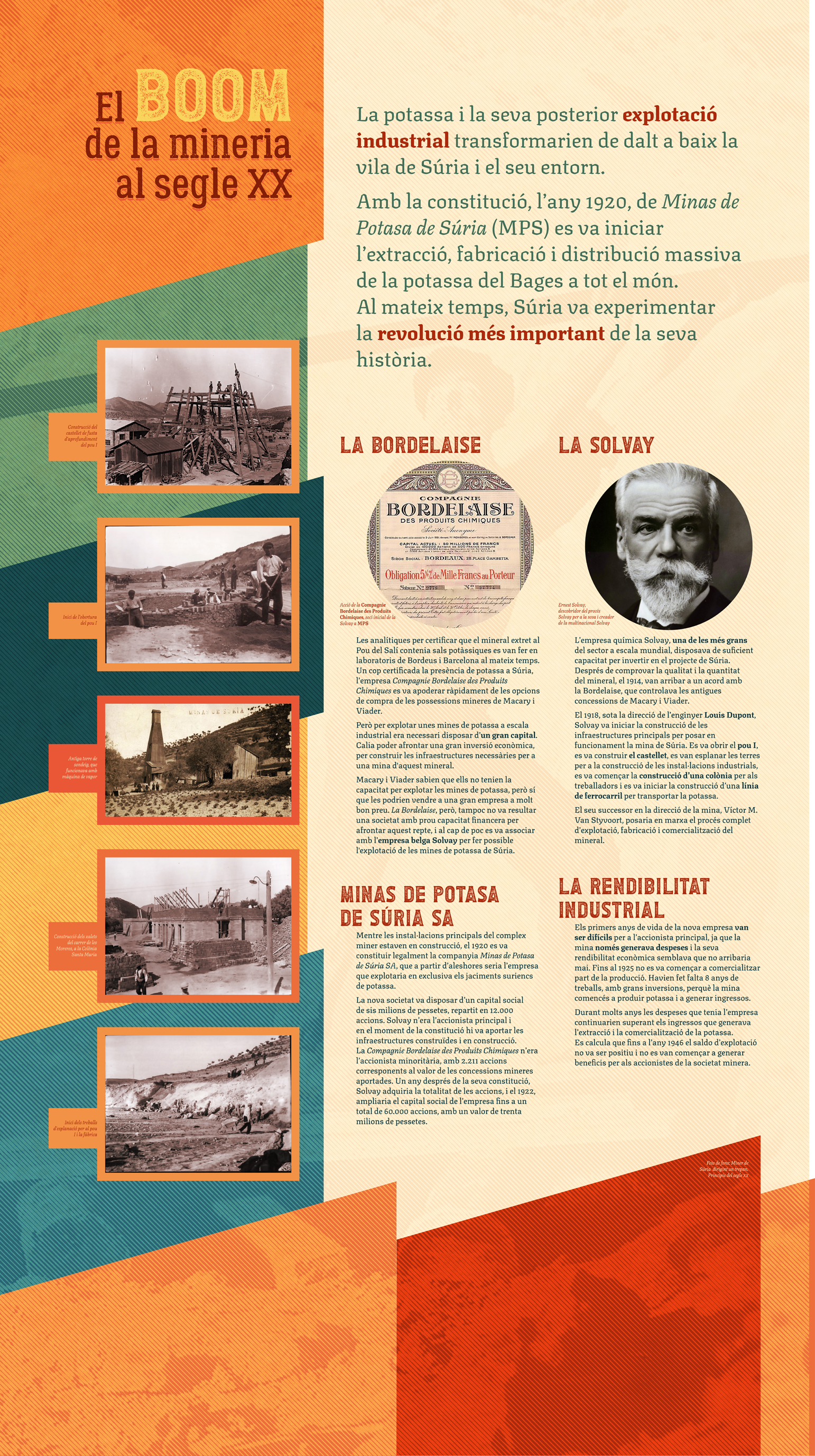4. THE MINING BOOM IN THE 20TH CENTURY
The potash and its subsequent industrial exploitation would transform the town of Súria and its surroundings from top to bottom.
With the establishment, in 1920, of Minas de Potasa de Súria (MPS), the extraction, manufacture and mass distribution of potash from Bages began throughout the world.
At the same time, Súria experienced the most important revolution in its history.
THE BORDELAISE
The analyzes to certify that the mineral extracted from El Salí shaft contained potassium salts were carried out in laboratories in Bordeaux and Barcelona at the same time. Once potash in Súria was certified, the company Compagnie Bordelaise des Produits Chimiques quickly took up the options to purchase the mining holdings of Macary and Viader.
But to exploit potash mines on an industrial level, it was necessary to have a large amount of capital. It was necessary to be able to face a large economic investment, to build the necessary infrastructure for a mine of this mineral. Macary and Viader knew that they could not exploit the potash mines, but they could sell them to a large company at a very good price. La Bordelaise, however, was not a company with enough financial capacity to face this challenge, and in a short time, it would end up partnering with the Belgian company Solvay to make possible the exploitation of the potash mines of Súria.
SOLVAY
The chemical company Solvay, one of the largest in the sector worldwide, had sufficient capacity to invest in the Súria project. After verifying the quality and quantity of the ore, in 1914, they reached an agreement with the Bordelaise, which controlled the old Macary and Viader concessions.
In 1918, under the direction of the engineer Louis Dupont, Solvay began the construction of the main infrastructures to put Súria's mine into operation. The first shaft was opened, the headframe was built, the land was levelled for the construction of the industrial facilities, the construction of a colony for the workers began, and the construction of a railway line to transport the potash.
His successor in the management of the mine, Víctor M. Van Styvoort, would set in motion the complete process of exploitation, manufacture, and commercialization of the mineral.
MINAS DE POTASA DE SURIA S.A.
While the main facilities of the mining complex were under construction, in 1920 the Minas de Potasa de Súria S.A. company was legally established, which from then on would be the company that would exclusively exploit Suria’s potash deposits.
The new company would have a share capital of 6 million pesetas, divided into 12,000 shares. Solvay would be the main shareholder and at the time of its constitution, it would contribute to the infrastructures built and under construction. The Compagnie Bordelaise des Produits Chimiques would be the minority shareholder with 2,211 shares corresponding to the value of the mining concessions contributed. A year after its establishment, Solvay acquired all the shares, and in 1922, it expanded the company's capital to a total of 60,000 shares with a value of 30 million pesetas.
INDUSTRIAL PROFITABILITY
The first few years of the new company's life were difficult for the main shareholder, as the mine generated only expenses and its financial return seemed never to come. Until 1925 part of the production would not begin to be commercialized, it had taken 8 years of work with large investments for the mine to start producing potash and generating income.
For many years the company's expenses would continue to exceed the income generated by the extraction and marketing of potash. It is estimated that until 1946 the operating balance was not positive and until then, profits were not generated for the shareholders of the mining company.


